
Changing My Mind
An Evolving Perspective on Personality Type
Robert McAlpine, September 5, 2012

I struggled with these changes at every point, yet I am certain that without them I would have stopped using the theory long ago. Today I find that the changes in my understanding allow type theory to remain an important part of my life.
In 1985, I was introduced to type theory by a leading MBTI® trainer and author who spent two hours explaining type preferences to approximately 450 people assembled in a large auditorium, after which I was given my MBTI® report and told that I was an ISTJ. I left with the understanding that as an ISTJ, I could use Sensing and Thinking but not Intuition and Feeling. I also remember leaving with the guidance that I should make sure those who worked for me or with me understood my limitations.
In 1988, as an Army officer, I was selected to attend MBTI® Qualification Training as my organization wanted to use the instrument in leader development. I still have the notebook I received for that training, and in my notes I find that I recorded comments like the following: “Sensors have an acute power of observation and awareness of present experiences, a memory for facts and data, and a capacity for realism.” There is no mention of anything that would imply the ability of a “sensor” to use Intuition, nor that extraverted sensation (Se) and introverted sensation (Si) are different from one another. Although I have since learned that both Jung and Myers did distinguish between the extraverted and introverted use of the functions, I left my qualification (now certification) training without meaningfully differentiating between the two. Of course the same was true for all of the function-attitudes when the attitude differed. I also left the training room using type in a stereotypical or pigeon-holing way as you might expect from the notes I had taken. While I could not find references in my notes, I recall being told that I used my dominant and auxiliary in positive ways and my tertiary and inferior in negative ways. I also recall being told that Jung’s writings were too complex for those of us just becoming qualified to understand.
With that background, I started training more than a hundred of my peers to interpret MBTI® results to their students in the course we were facilitating. We were training more than 3,000 students a year using my understanding of type theory, so you can imagine what a horrible job we were doing of training leaders in our organization to use type theory. I’ve reconciled what we did by convincing myself that we did it to the best of our abilities and with the best of intentions. We even had my qualification trainer visit our organization every year for the next four years and qualify more of us. I audited the training every year and never noticed how badly we were misrepresenting the theory nor did any of my peers who were going through the training.
After leaving the Army I was asked if I would like to join one of the organizations licensed by CPP to conduct MBTI® qualification training, and I jumped at the opportunity—not knowing what would happen to my understanding of type theory just a little more than six months later, when I attended my first APTi conference. At that conference in 1993, I heard John Beebe present his model for working with Jung’s theory of psychological types. Never before had I ever heard anyone mention that a person possessed all eight of Jung’s function-attitudes. I was so turned off that I started to leave the room, but Linda Berens told me to sit down and listen to what Beebe had to say. The idea I heard was that each of the mental processes resides in me in a different way. This made no sense to me, but the idea that Icould use all eight function-attitudes just wouldn’t go away (although at the time we didn’t call them that—this term would be coined by Dick Thompson in 1996 in his seminal work, Jung’s Function-Attitudes Explained).
At our next trainers’ meeting, attended by Margaret Hartzler, Linda Berens, Gary Hartzler, Marci Segal, Peter Nobel, and Stephanie Rogers, we decided to add the eight function-attitudes to our qualification training even though we didn’t completely understand Beebe’s model. As we worked with the model in our “Experiencing the Sixteen Types” workshops, it started to become meaningful. We were trying to shift from thinking of Intuition to thinking of extraverted intuition (Ne) and introverted intuition (Ni). As we listened to participants tell us their life stories, we started to see the different function-attitudes emerge. Linda Berens and I would be frantically taking notes on a chart pad, and we’d go back to the group and ask them, “What mental function does the person seem to be using?” We began to identify the mental processes, and then we’d ask the individual if he or she would agree with the ones we were naming.
Of course I was also doing some serious reflecting on how I experienced each of the function-attitudes as I gained an understanding of each of them. My first big realization had to do with the man I had shared an office with at Fort Leavenworth. We were both lieutenant colonels and we taught the same curriculum. He had ISTP preferences. There was only one letter different between us and yet there were things he’d do that I just couldn’t understand. We were really different. Jack was totally spontaneous, into adding humor to everything he did. For instance, each day we had stacks of transparencies we were supposed to go through during a training class. He would secretly slip some cartoon out of Playboy into the middle of my stack so that I would get a big surprise during class. The other thing he’d do was the way he approached the volleyball tournament where his section and mine competed. The winning section staff leader was given an autographed volleyball, so we competed to see who had the most volleyballs on display. Jack would come into the office and say, “Let’s go play at 9:00 am this morning.” I would think that we had too much to do and needed to get our work done first. He would insist: “Bob, the courts are only available at nine.” I knew that my captains would jump at the chance to go play volleyball instead of working the problems we had to get through, even though It would mean we’d have to stay late at night. I also knew that if I didn’t go with Jack, he’d go play with somebody else and we would miss the opportunity to see our team improve. We were so different, yet the way I had been taught type would indicate that we were very much alike. I couldn’t reconcile the Se vs. Si and the Te vs. Ti in the ‘preference way’ that I was applying type. I knew something wasn’t right, but couldn’t figure out what it was. In my qualifying program they spent so much time teaching us how to determine the function-attitudes in the dominant, auxiliary, tertiary, and inferior positions that there had to be something to it, but we hadn’t been taught what it was. I was getting frustrated. I was starting to recognize that I had to find what it meant—how the functions-by-attitude differed—or I couldn’t stay with it any more. Type as I had been taught it wasn’t holding up.
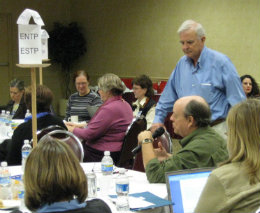
The type code had another unintended effect, which was to elevate the E-I and the J-P dichotomies to the same level as the functions. I had always thought of myself as an Introvert and nothing else. I had also been taught that I was a Judging type and I had been told that “J’s decide quickly,” but that was not true for me. So there were holes in my preference framework where my experience did not fit what I was taught.
Using type exclusively at the level of the preferences was an oversimplification. It allowed us to really impress people with what we knew and to have some success in helping people recognize differences between themselves and others, but it didn’t give us what we needed to help people use type as effectively as possible.
In 1996, we at Type Resources set about teaching our understanding of Beebe’s model in our MBTI® qualification programs, and using it in our consulting. We were incorporating the eight Jungian functions and playing with them. We were just convincing ourselves that everyone used each of the eight function-attitudes. Beebe had exposed me to the idea that there had to be meaning to it, and now I was starting to work to find that meaning for me. This was such a shift in how we had been teaching type theory that it took us several years to fully recognize the value of the eight function-attitudes. The more we worked with it the more real it became. We knew we were really helping people understand themselves in a way that made a lasting difference in their lives.
But by the late ‘90’s I knew we had to learn about type from some way besides just having people talk about themselves. It was during this same time period that we started working to integrate the archetypal energies into the eight function-attitude model we were using. As we started trying to understand the archetypal energies, we had to recognize that each would manifest a little differently from individual to individual based on the complex that had formed. For example, we began to realize that introverted sensation was different for ISTJs than for ESTJs. We realized the need to learn more from John Beebe but we weren’t finding anything he had published on his model. I had heard him speak several times at different APTi conferences but we had never talked. I was sure he was a very busy man and didn’t have the time to talk with me. Besides, what was I going to say other than that I wanted to learn more about his model? Finally I decided that the worst he could do was not accept my phone call, so I called him and told him I wanted to host a workshop in which he presented his model over several days in a way that would allow me to really start to understand it. To my surprise, he agreed. In fact, he immediately liked the idea, and he and I spent the next three years developing a vision for the workshop, which was to examine each function-attitude in each of the eight positions. In either 1999 or 2000, we held our first workshop on the eight-function-attitude, eight-archetype model in Emeryville, CA. We learned that each function-attitude generated different kinds of energy depending on its position in the dynamic model.
That’s when I started to really understand how my extraverted feeling (Fe) Trickster worked. During the qualifying trainings we were giving at that time, we had five facilitators with ENFJ preferences. Every time I trained with one of the ENFJs, at the end I’d be written up as being cold-hearted and unapproachable. On the first morning of training, the ENFJs would be all about meeting everyone and making everyone comfortable, while my job was to get the room set up and operational by 8:30 a.m. It dawned on me that the trainees were responding to the other facilitators’ extraverted feeling in the Hero position, and my Fe Trickster didn’t allow people to see that I was a warm and caring individual too. I realized that I was trying to copy the ENFJs, and to use my Fe as though it were a Hero, by doing the things they did, and I was getting tricked every time I tried it. I was also being tricked by letting the ENFJs do what they wanted to do while dumping the bureaucratic tasks on me. So I started saying to my ENFJ co-facilitators, “No, you can’t go chat with participants, you have to lay out the materials on the tables, organize the books, etc.” I had to not let them have all the Fe activity. It was all defensive on my part.
Another big realization I had concerned John’s terms for the archetypes, which I had always struggled with. I spent hours trying to research what each meant and I wasn’t having much luck with it because I couldn’t find information on all of them. John called the auxiliary archetype the Mother/Father, using the standard Jungian terms.I then realized that if I thought of this archetype as a Good Parent, and the Senex as a Critical Parent, the model worked for me. Applying these terms helped me understand John’s comment in 1993 that ‘each of the functions resides in the body in a different way.’ I have introverted thinking in the Critical Parent position, and I realized that I tended to use my introverted thinking when someone did something that violated my framework. When that occurred, it took tremendous energy and restraint to keep from responding in an aggressive way. I still deal with that when I’m around people who say things like, ‘Extraverted thinking (Te) is thinking out loud and introverted thinking is keeping your thoughts to yourself.’ When I hear that I feel the Ti Critical Parent rise up in me wanting to say, “Keep your mouth shut—you don’t know enough to say anything.” When I began to notice the emotion that came up when my Ti got engaged, I gained the ability to manage the Senex and not explode on someone. This was a giant step forward for me. There are still times when it is all I can do to control myself, but feeling those emotions building allows me to begin to manage them.
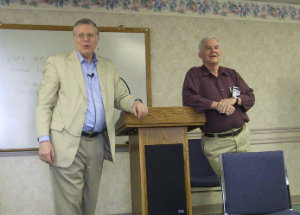
The Beebe model helps me understand psychologically the evolution in my thinking over time. What happened is that I moved away from using my dominant Si to using my eighth function Ni, mediated by my fifth function, Se. When I was first trained, as a good Si dominant, I accepted what I was being told and I went back and tried to use it. As I worked with it, I started to find holes in it. Those notes I took in my very first training about Sensors having an “awareness of present experiences and a memory for facts and data” were not true for me. I was not always aware of the present, nor was my memory perfectly accurate. As I found the holes, I switched from being the good ISTJ to saying, “No, this isn’t right, it doesn’t hold up in the world.” What happened is that my fifth or Opposing Personality function, extraverted sensation, began to resist what I had been taught. I was looking around for confirmation with Se, and my Se was taking the adversarial role that John’s model predicts for the fifth function, saying ‘No.’ At first this took me into Ni demonic. Ni seeks meaning, the hidden truth underlying reality, and I found myself suspecting that the whole type thing was bogus. But after working with the Beebe model, I started to develop my own theory of how it worked. At that point, I began to use my eighth function daimonically, and my introverted intuition replaced my introverted sensation learning with my own understanding of type.
Thanks to the many people who have attended and engaged Jung’s theory through the model, I have continued to learn more about myself and I’ve gained ways to recognize when function-attitudes are taking control of me instead of my being in control of them. Now my approach to type is: ‘Yeah, I’m an ISTJ. I don’t doubt that at all. Yet I can access each of those function-attitudes and use each of them as I become more competent with them.’ It’s a little like moving from a tricycle to a bicycle. I can use Ni, or Se, and so on. I’ll have trouble with it, but I can use it.
I hope that no one is trying to introduce type to people in large groups today because there is no opportunity to get one’s questions asked. Mass trainings allow people to walk away holding many basic misconceptions about type theory and set them up to make mistakes as they try to use the theory. As for the stereotyping we used to engage in, I believe the current eight function-attitude approach we use instead of the preference approach has helped us eliminate much of it although there is still room to improve. That Jung is too hard to understand is a misconception that I do not hold to be true today. And the idea that we always use dominant and auxiliary function-attitudes positively and tertiary and inferior function-attitudes negatively has also gone by the wayside.
Today, I no longer look at type as a static framework that a person has to fit into. I view Jung’s model as a dynamic model with each person having certain function-attitudes that are more natural to use than others, but with each of us having the capability to use each function-attitude effectively and appropriately when we are willing to recognize what is needed and muster the energy to call that function-attitude into action in a controlled way. This is a totally different perspective than the way I started, and I do not think we’ve reached the end of our journey in learning about Jung’s theory of psychologicaltypes.
Header Image
Vladimir Kush,”Egg Sun,” 2007-9


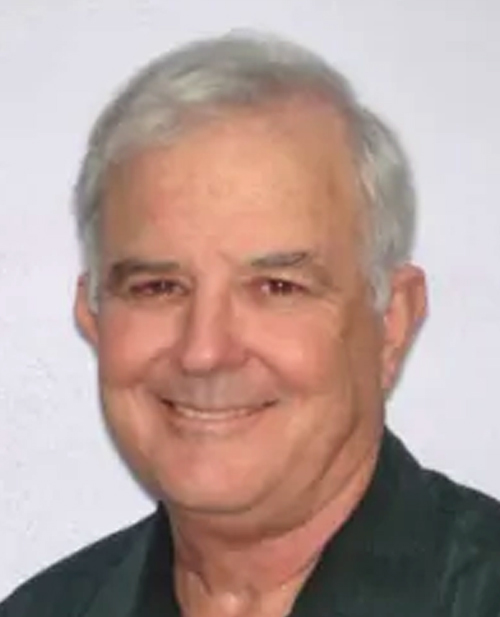

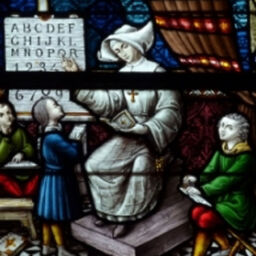

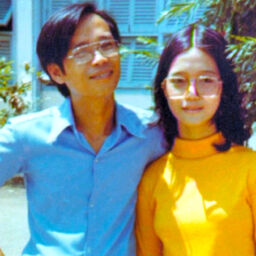


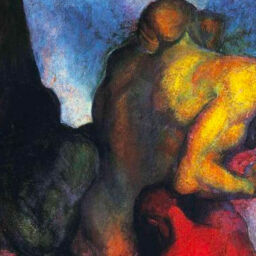



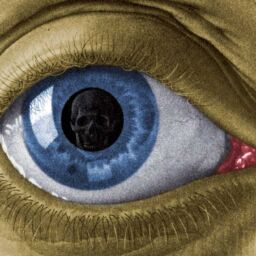

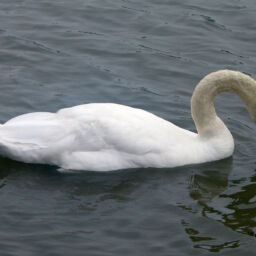

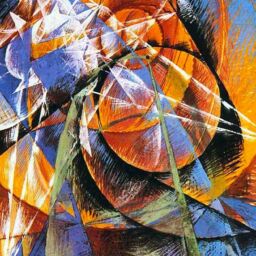
This is Carol speaking: Bob, I don’t know if Ann’s book would help you enjoy writing more, but I can attest that her book helped me understand my excesses and self-correct, just the way that understanding my personality type helped me begin to recognize the inflation of some aspects of it.
Thanks to all of you for your comments and to the editors, Carol and Mark, for persevering as I struggled with the article.
I find one of the easy ways to work with the eight function-attitude model is to treat each as an intelligence and get my clients to recognize when and how each is needed. I can do this with or without type jargon and without anyone knowing their type code. Once a person has bought into the value of each function-attitude I can ask if each is as attractive or enjoyable to use. Of course they are not, and now I can introduce the idea of each person having a code that indicates which function-attitudes might be enjoyable or natural to use and which ones might require conscious energy and concentration to use. If time is short, no one might ever determine a best-fit type code, but they will realize how they differ in preferring to use certain processes.
Regarding writing, maybe I need to buy Ann’s book as well. Writing is something I despise. In fact posting this is extremely draining, and if I were to read my post I’d probably delete it as the review always generates a feeling of being simple minded. On the other hand the volume of comments and positive comments make it worthwhile.
Hope I’ve answered most of your questions. If not email me at bmcalpine@type-resources.com.
Hi Ryan,
You might want to take a look at my book, “Write from the Start: Discover your Writing Potential through the Power of Psychological Type,” published by CAPT in Gainesville, FL. This book offers ways to break writers’ block and find your authentic voice by writing from your preferences and revising from your nonprefences. As an ESFP, I know some of the struggles that can come from trying to draft from the intuitive function. Please let me know if my book helps you with your seminary papers!
Ann Loomis
Bob,
Thanks for a great article. I like the deep story but I have to process the opposing personality a little more. Having an ESTP type code, I have Se in dominant and Si in opposing w/ Ne in demonic.
Is this why it takes a tremendous amount of energy to write my papers in seminary? It makes me want to give up, multiple times at that. Hmmm . . . ????
I really find it helpful to know the 8 functions and how they align with archetypes. I have received deep insights (ENTJ using Introverted Intuition as Auxiliary) on how my function in the Trickster position works. There is still so much to learn.
Thank you, Julie, this is most helpful and a valid point you make, that one need not understand the theory in depth to benefit fro use of it that is based in my knowledge of it.
I always start with addressing their desired state/presenting problem. Exercises in type dynamics are useful because they can lead clients to experience things directly for themselves. I don’t try to teach (or sell them on) the theory so much as to help them apply it to their benefit. Then, if they want to peer behind the curtain of theory, there’s so much available.
How do you work with the 8 function attitudes with an individual client who has no knowledge of type? It’s a complicated theory that’s taken me some time to understand, and this is with my seven years of being an MBTI practitioner. Most of the clients I’ve worked with are not willing to spend more than a few hours on type, and it’s hard to convey this information in such a short time. I welcome any suggestions and comments.
Thanks so much for this, Bob! Your story really resonates. Our mission as practitioners now needs to shift to advocacy for the subtler aspects of type, beyond preferences, and I wish us all resolve, humility and stamina in doing so!